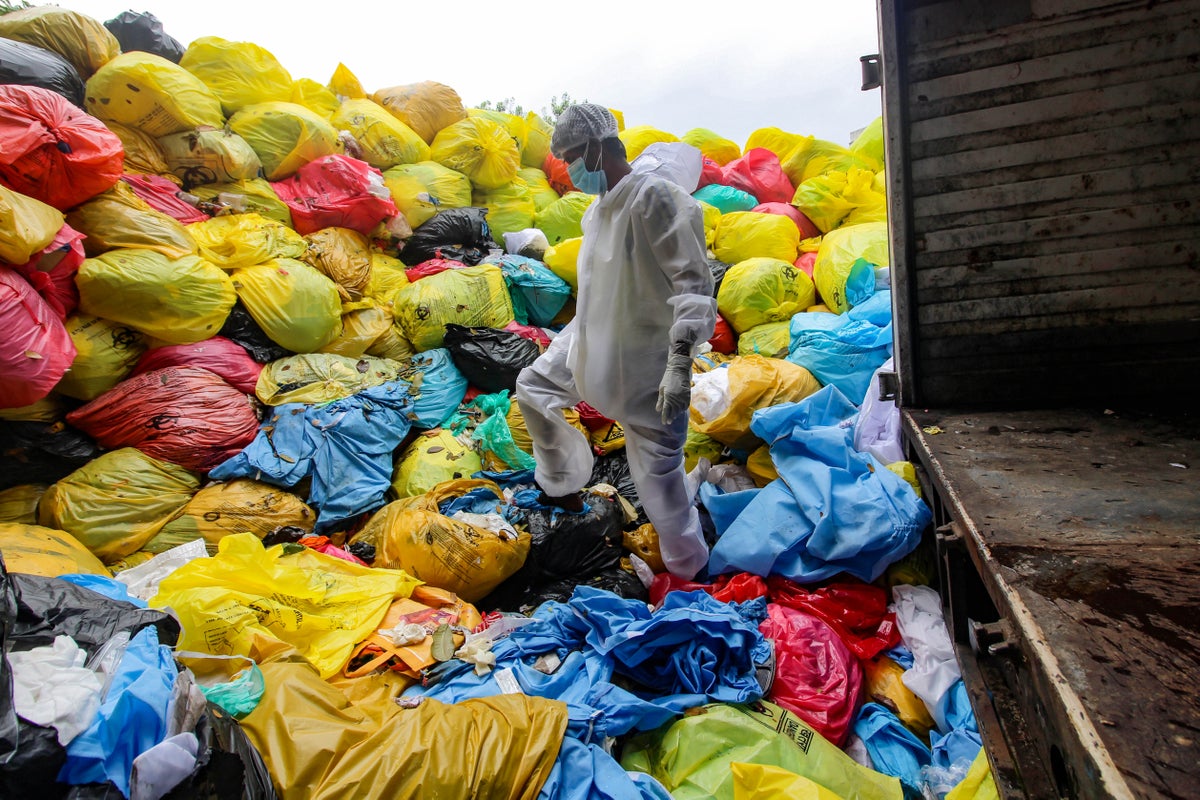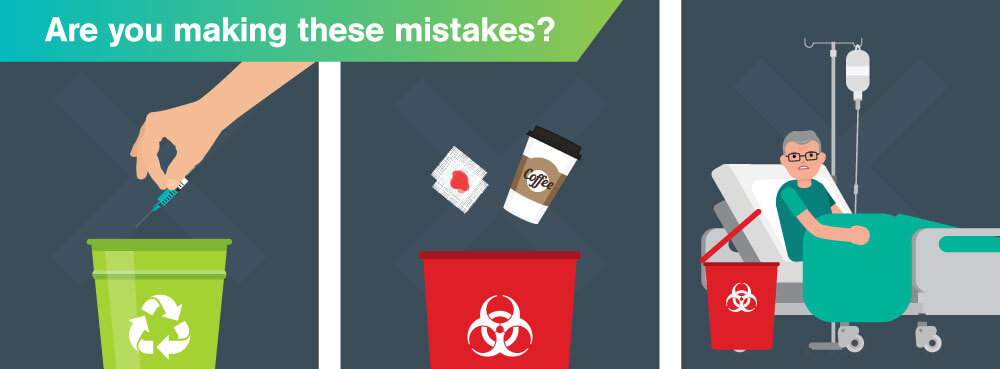Ideal Practices for Medical Waste Monitoring
Medical waste monitoring is an essential element of health care centers' operations to ensure the security of people, team, and the environment. Carrying out best methods in medical waste administration is crucial to decrease the risks associated with dangerous waste.

Segregation and Categorization
In the area of clinical waste monitoring, proper segregation and categorization are important practices for making certain the risk-free and reliable disposal of healthcare-related materials. Medical waste is generated from numerous sources, including health centers, facilities, labs, and various other health care facilities. It includes a large range of things, such as needles, syringes, plasters, handwear covers, and pharmaceutical waste.
Partition involves the methodical separation of different types of clinical waste based on their characteristics and possible threats. Sharps waste, such as blades and needles, must be placed in puncture-resistant containers to avoid injuries and the spread of transmittable conditions.
Categorization is the process of categorizing clinical waste right into various classifications based on its potential dangers. These categories may include infectious waste, contaminated materials, pharmaceutical waste, and general waste. By categorizing waste, health care facilities can determine the suitable disposal methods and make sure compliance with local guidelines and guidelines.
Proper segregation and classification of clinical waste not only safeguard the health and safety of medical care workers and the general public however additionally add to the total efficiency and performance of waste monitoring. It lowers the danger of crashes, lessens environmental effects, and advertises responsible garbage disposal methods.
Proper Storage and Classifying
To guarantee the secure and effective disposal of medical waste, medical care facilities need to adhere to proper storage and labeling methods. WasteX Medical Waste Disposal. Correct storage and labeling play an essential function in preserving the integrity of clinical waste administration systems and shielding the wellness and safety of healthcare workers, individuals, and the public
When it involves storage space, it is essential to have actually marked areas particularly created for different sorts of clinical waste. These areas need to be safe and secure, well-ventilated, and furnished with suitable containers that satisfy governing criteria (medical waste disposal service). Segregation and classification of waste should also be considered to avoid cross-contamination and potential threats

Normal surveillance and evaluation of storage locations and containers are vital to determine any kind of problems or offenses. Team needs to be educated on proper storage space and labeling methods, stressing the value of compliance with policies and protocols.
Safe Transport and Handling
Ensuring the safe and secure and correct transportation and handling of medical waste is essential for preserving the stability of waste administration systems and guarding the health and wellness of all included. Medical waste, that includes things polluted with transmittable materials, pharmaceuticals, and other hazardous compounds, have to be moved in a fashion that protects against leaks, spills, and possible contamination.
It is essential to use leak-proof and puncture-resistant containers that are especially designed for medical waste. Additionally, waste must be segregated based on its nature and type to avoid cross-contamination.
Throughout transportation, it is necessary to guarantee that waste containers are securely fastened and kept in a steady way. Automobiles used for delivering clinical waste needs to be equipped with appropriate safety features, such as spill containment systems, to minimize the risk of any kind of spills or leakages. Vehicle drivers need to receive training on proper handling and emergency response treatments to properly address any unexpected cases.
Furthermore, the transportation and handling of medical waste ought to follow all relevant laws and standards established forth by regional, state, and federal authorities. WasteX Medical Waste Disposal. medical waste removal. Routine inspections and audits need to be conducted to analyze conformity and determine any type of areas for renovation
Compliance With Regulatory Guidelines
Keeping conformity with governing standards is necessary for effective medical waste monitoring. These standards are implemented to safeguard public health and the environment by ensuring that clinical waste is effectively managed, dealt with, and disposed of. Conformity with regulative guidelines helps to avoid the spread of contagious diseases, minimize prospective hazards, and lower the overall effect of clinical waste on the setting.
To attain conformity, health care facilities must remain informed about the particular policies governing medical waste management in their jurisdiction. These policies might differ from nation to nation, and even within various states or regions. It is necessary for medical care centers to have a detailed understanding of these guidelines and to apply proper methods and protocols to make certain conformity.
One trick aspect of conformity is the appropriate partition find here and labeling of different sorts of medical waste. This includes dividing sharps from various other waste, in addition to categorizing waste based upon its prospective threats. Healthcare facilities have to likewise make sure that clinical waste is saved in appropriate containers which these containers are correctly identified and sealed.
In addition, compliance with regulative guidelines needs medical care centers to develop appropriate training and education and learning programs for personnel participants entailed in medical waste monitoring. This consists of supplying training on waste partition, handling, and disposal procedures, in addition to the proper use personal safety devices.
Regular surveillance and audits are additionally necessary to make sure ongoing compliance with regulatory standards. This entails performing normal evaluations of waste storage locations, documenting waste administration procedures, and preserving documents of garbage disposal.
Effective Disposal Techniques
Healthcare facilities need to use effective disposal methods for proper administration of medical waste. Incorrect disposal of clinical waste can present significant health and wellness and ecological dangers. There are numerous approaches that can be made use of to effectively dispose of clinical waste, ensuring the safety of medical care employees, individuals, and the general public.
One frequently utilized technique is incineration. Incinerators can safely burn medical waste at heats, reducing the quantity and ruining any kind of potentially damaging virus. However, incineration can be expensive and may release hazardous toxins into the air otherwise properly managed.
One more method is autoclaving, which involves subjecting the waste to high-pressure heavy steam. This process eliminates germs, infections, and various other bacteria, providing the waste risk-free for disposal in routine waste streams. Autoclaving is a ecologically friendly and effective technique, yet it needs customized devices and qualified employees.
Chemical sanitation is additionally made use of sometimes, where liquid chemicals are related to the waste to decontaminate it. This method is much less typically used because of issues about the efficiency of chemical disinfection and the potential for chemical residues to pollute the atmosphere.
In addition to these methods, healthcare facilities should additionally apply appropriate partition, packaging, and labeling of medical waste to ensure its safe handling and disposal. Routine training and education and learning of personnel on appropriate waste management practices are important to maintaining efficient disposal approaches.
Final Thought
To conclude, applying finest methods for medical waste monitoring is necessary for ensuring the safety of health care employees, individuals, and the setting. By properly segregating and categorizing waste, keeping and classifying it properly, making certain safe transport and handling, abiding by regulative guidelines, and utilizing effective disposal techniques, health care facilities can properly handle and reduce the threats connected with medical waste. It is vital for medical care companies to adhere and focus on to these finest methods to preserve a lasting and secure healthcare atmosphere.
Medical waste monitoring is an important element of health care centers' operations to ensure the safety and security of clients, team, and the setting. Implementing best techniques in clinical waste monitoring is necessary to decrease the dangers linked with unsafe waste. These groups might consist of infectious waste, hazardous waste, pharmaceutical waste, and basic waste.In final thought, executing best techniques for medical waste monitoring is important for making certain the security of medical care employees, individuals, and the atmosphere. By correctly categorizing and setting apart waste, storing and classifying it correctly, making sure risk-free transportation and handling, conforming with governing guidelines, and employing reliable disposal methods, healthcare facilities can efficiently take care of and reduce the threats associated with clinical waste.